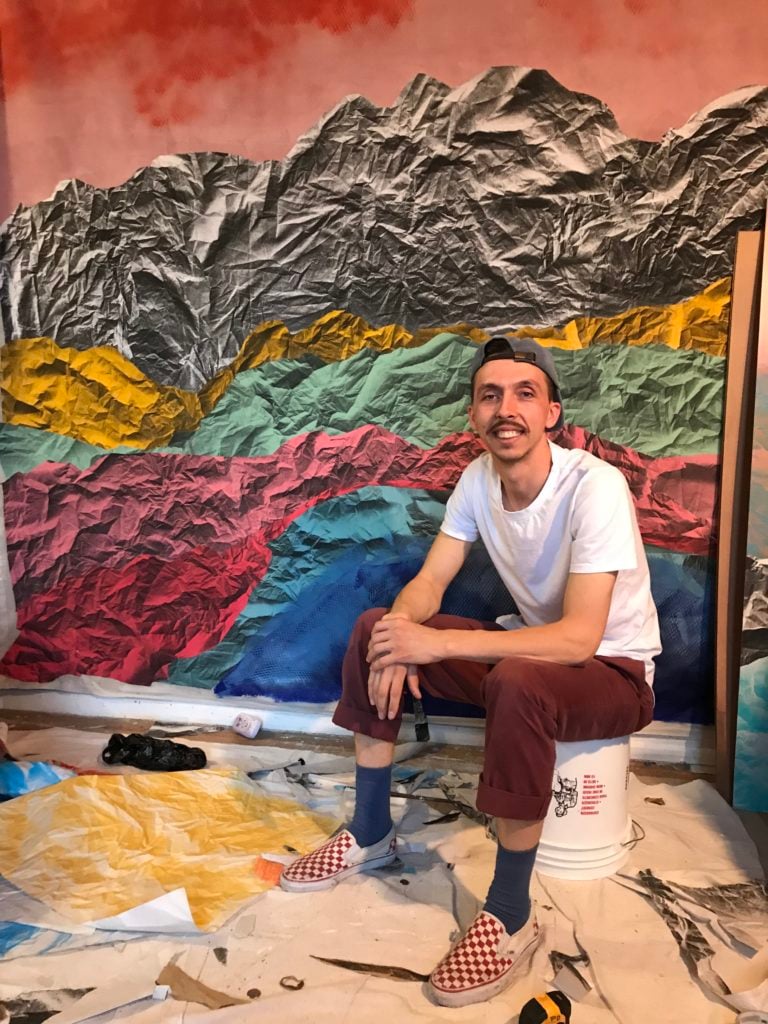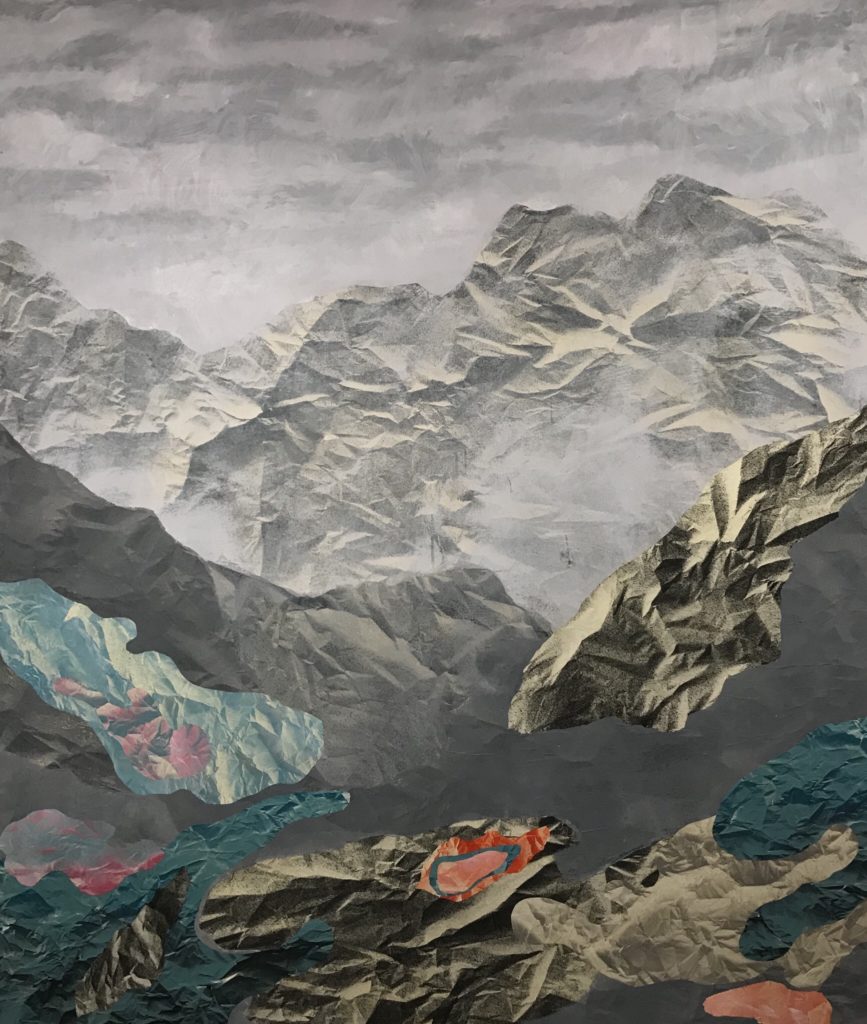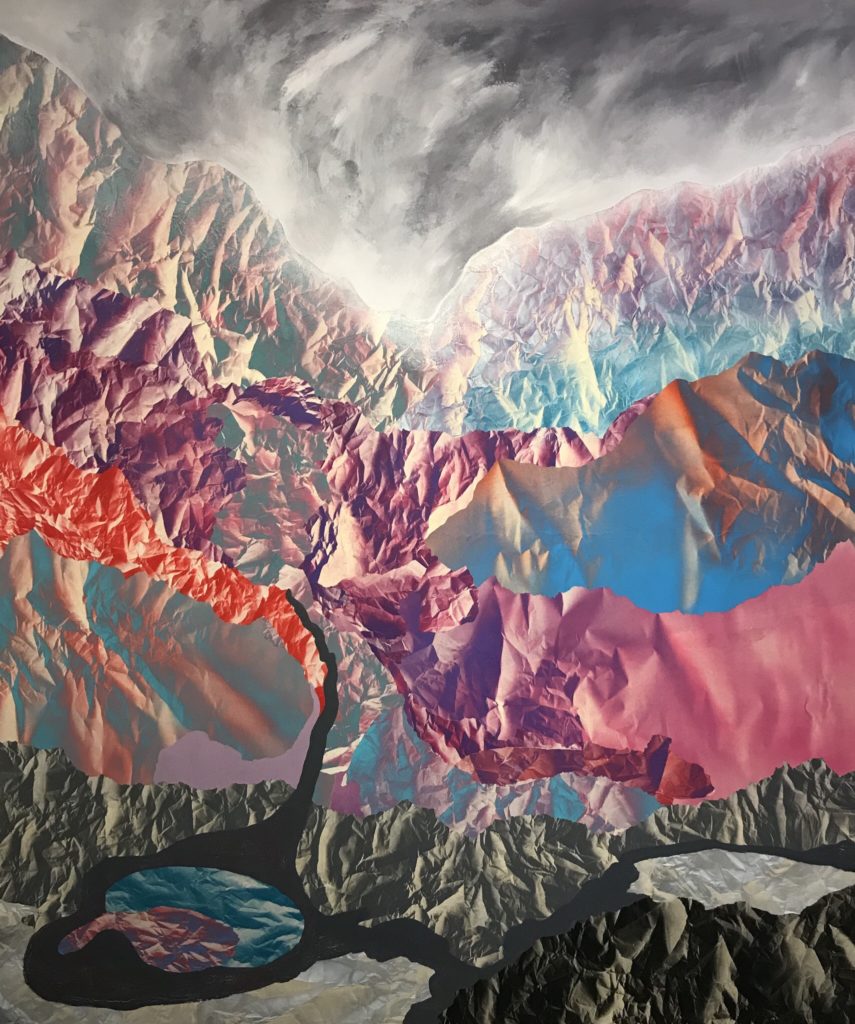Art World
How the Kosovo-Born Artist Pajtim Osmanaj Parlayed His Construction Background Into an Art Career
The Kosovo-born artist found inspiration in the unlikeliest of places.

The Kosovo-born artist found inspiration in the unlikeliest of places.

Caroline Goldstein

In 2013, the New York-based artist Pajtim Osmanaj moved to the city from his native Kosovo, where he had attended art school. Once in the city, he started working in construction to supplement his emerging art career, and in luxury buildings, in the midst of renovations and expansions, he found an unexpected wealth of inspiration and a bounty of ready-made materials to turn into art.
While working some of these jobs, Osmanaj would paint murals on temporary walls, in stairwells, and on trash cans. His work caught the eye of a building developer and his unlikely canvases were written up in The New York Times. Though his guerrilla-style works are long cemented-over or covered in plaster, one vestige of his experience is now fully intertwined with his studio practice. We caught up with the now full-time artist to talk about his process.
Tell us about your background and how it influences your work.
When I first moved to New York, I worked in construction, and sometimes we’d have to paint a whole room using spraying machines. We would sometimes have to do the ceiling in different places, and so we would cover everything with drop cloths to protect the floors. We would be spraying from the sides, and from different angles, so we had all of the fabric overlapping, and just thrown on the floor, wrinkled.
When we finished spraying the paint, we’d leave the drop cloths there and let the paint dry for two to three hours at least, and my boss would ask me to throw away the cloths. When I opened them up, I saw the wrinkles had held the paint on the canvas, and it was so beautiful, so I kept them.

Pajtim Osmanaj, work from “Static Beauty.” Courtesy of the artist.
And then you tried to reproduce that same effect in your studio?
At first I just took those cloths, straightened them out, added a little bit of color or design, and then signed my name on the bottom! That’s how I got inspired, seeing these wrinkles create a pattern and a painting. It was like magic. I had been studying art for so long, you think you’re going to be a great artist by studying a lot. But actually, the most beautiful thing happened once, by accident.
The beginning of the process is very mechanical. I just tear pages and pages of paper—a nicely textured, heavy paper, or a canvas paper, so that I have strips and pieces of different sizes. Then I create the wrinkles, by very simply crumpling up the paper, just like a tissue, making the folds and creases.
Then I carefully unfold the paper and smooth it out just enough so that it is almost flat, but the wrinkles are still there, like a memory.
So the act of making the wrinkles and tearing the paper becomes a sort of performative-sketch?
Exactly. And it’s always different—even If I wanted to, I could not recreate the same process, so everything is unique. I used to be a more classic painter, knowing exactly how I wanted it to look in the end, maybe even before I started. Now, the entire process is part of the artwork. It’s spontaneous.
When the paper has settled, I use spray-adhesive to keep the wrinkles in tact, and after that dries I spray paint them with regular aerosol paints you can buy at the grocery store. I use all different colors, and I spray it from all different angles, so that the paint is heavier in some places.
Those papers become my palette. Usually a painter’s palette is all of your colors, acrylic or oil paint. For me, now it’s the paper.
And you collage the papers together to create this mountain-range sort of image?
Yes, I have all these papers in my studio, I lay them all out on the ground, and I experiment with the color combinations out of these hundreds of papers. Sometimes I’ll do a monochrome work, or sometimes it’s just black and white, but lately it’s all bright colors.
When I collage them together, I spray the glue and smooth it over so that you cannot tell it’s a collage. It all becomes part of the image, so that from far away you cannot tell, and it looks almost like a photograph. Only when you get up close, you can see the details, all of the layers.

Pajtim Osmanaj, work from “Static Beauty.” Courtesy of the artist.